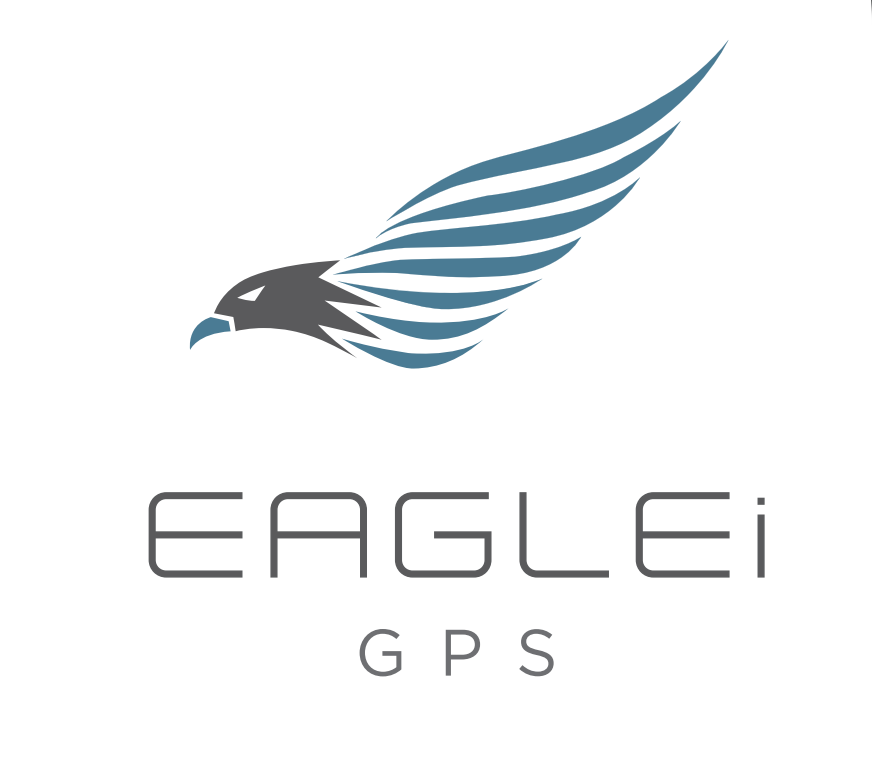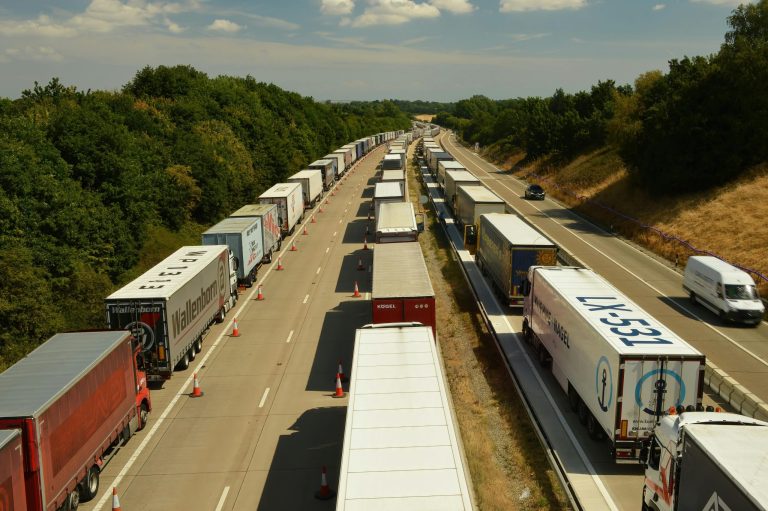AI Fleet Tracking: The Future of GPS Logistics
Introduction
Artificial intelligence (AI) is driving a revolution in GPS fleet management, enabling what many call smart fleet technology. Modern AI fleet tracking systems go far beyond basic vehicle location monitoring – they leverage advanced machine learning and even generative AI models to optimize operations, enhance safety, reduce costs, and improve decision-making. In an industry where efficiency and safety are paramount, the adoption of AI for logistics has surged. Surveys show a large share of fleet companies are now deploying AI solutions and seeing measurable performance improvements [1].
Below, we look at how the latest AI models are impacting GPS fleet management in five key areas: route optimization, predictive maintenance, driver safety, fuel efficiency, and decision support (including generative AI).
Smarter Route Optimization with AI Fleet Tracking
Efficient routing is at the heart of profitable fleet operations. AI-powered route optimization uses algorithms and real-time data (traffic, weather, delivery windows, driver hours, etc.) to chart the most efficient paths for each vehicle. This dynamic approach dramatically outperforms manual route planning. Fleets using AI-driven routing have reported significant fuel savings, faster delivery times, and more consistent on-time performance [2].
Instead of fixed, one-time daily routes, AI route engines continually recalculate based on live conditions. If a highway shuts down, a storm rolls in, or a high-priority stop is added, routes are updated automatically. This flexibility helps drivers avoid congestion, reduce empty miles, and complete more jobs in a day.
Key benefits of AI route optimization
- Reduced mileage & fuel use: By cutting unnecessary detours and idle time, total miles driven and fuel consumption drop.
- Improved on-time delivery: Smarter routes and real-time adjustments help fleets hit tighter delivery windows consistently.
- Real-time adaptability: AI can re-route around traffic, weather, and last-minute changes automatically.
- Scalability: AI can handle routing for dozens or hundreds of vehicles and thousands of stops, something that quickly overwhelms manual planners.
Predictive Maintenance for Proactive Fleet Health
Maintenance and vehicle downtime are major cost centers for any fleet. Predictive maintenance uses AI to analyze vehicle sensor data (engine metrics, temperature, vibration, fault codes, brake wear, etc.) and identify patterns that precede mechanical issues. Rather than relying only on fixed service intervals or waiting for breakdowns, AI systems continuously monitor vehicle health and alert fleet managers to potential problems before they cause a failure.
Research on AI-driven predictive maintenance shows it can reduce maintenance costs by up to 40% and cut unplanned downtime by as much as 50% [3]. Fewer breakdowns mean more vehicles on the road generating revenue, and catching issues early prevents minor fixes from turning into major repairs.
Benefits of predictive maintenance
- Fewer breakdowns: Detects anomalies early and prevents many roadside failures.
- Lower maintenance costs: Fixes problems while they are small and avoids unnecessary part replacements.
- Longer vehicle lifespan: Keeps engines, drivetrains, and critical systems in peak condition.
- Optimized shop scheduling: Schedules service around routes and driver availability instead of emergencies.
- Improved safety: Ensures brakes, tires, and other safety-critical systems are always in good shape.
In industry surveys, fleet decision-makers overwhelmingly agree that AI-based maintenance insights help reduce downtime and improve asset reliability [4].
AI Enhancements to Driver Safety and Behavior
Safety is a top priority in fleet operations, and AI is increasingly central to modern safety programs. AI-enhanced dashcams and telematics systems can monitor driver behavior in real time, detecting patterns such as harsh braking, rapid acceleration, speeding, tailgating, lane departures, distraction, or drowsiness.
When risky behavior is detected, the system can provide in-cab alerts to the driver and flag events for managers. Over time, this data feeds into driver coaching programs, allowing fleets to address unsafe habits with targeted training rather than relying on occasional ride-alongs or incident reports.
Key AI-driven safety capabilities
- Real-time monitoring: Detects distracted driving, fatigue, and other risky behaviors and alerts drivers immediately.
- Data-driven coaching: Generates safety scorecards and trends per driver, helping managers focus training where it’s needed most.
- Accident reduction: Helps prevent collisions by warning drivers before dangerous situations escalate [5].
- Compliance support: Supports monitoring of speed, seatbelt use, and other policy or regulatory requirements.
- Incident analysis: Provides video and telematics evidence to reconstruct events and support investigations.
Industry research indicates that a large majority of fleets see AI as the future of safety and report measurable reductions in risky driving behavior after adopting AI-based monitoring and coaching [5].
Fuel Efficiency and Sustainability Gains
Fuel is one of the largest operating expenses for fleets and a major contributor to their carbon footprint. AI helps improve fuel efficiency from multiple angles. Route optimization alone can reduce fuel consumption by cutting unnecessary miles and idle time. Beyond routing, AI can identify wasteful idling, inefficient driving behaviors, and maintenance issues that hurt fuel economy.
How AI supports better fuel performance
- Reducing idle time: Flags excessive idling and suggests policy or training changes.
- Encouraging smooth driving: Rewards gradual acceleration, consistent speeds, and reduced harsh braking.
- Maintaining optimal engine health: Ensures engines, filters, and tires are in good condition to maximize miles per gallon.
- Optimizing load and route pairing: Aligns vehicle assignments, load sizes, and routes to reduce fuel per delivery.
- Supporting EV and alternative fuels: Helps plan charging and routing for electric or hybrid vehicles efficiently.
In addition to direct cost savings, these optimizations help reduce emissions, supporting environmental and ESG goals. Many fleets now view AI as a key tool in meeting their sustainability and efficiency targets [1].
Generative AI for Strategic Decision Support
One of the newest frontiers in fleet management is generative AI – the same class of models behind modern AI assistants and chatbots. Unlike traditional analytics tools, generative AI can understand natural language questions and generate human-readable answers, summaries, and recommendations.
Fleet managers can ask questions like “Which routes had the most delays last month and why?” or “Which drivers show the biggest improvement in safety scores?” Instead of manually pulling reports, the AI assistant can analyze telematics, maintenance, and operational data and provide a clear, concise response.
Examples of generative AI use in fleets
- Natural-language queries: Ask questions about performance, costs, or safety and get instant, data-driven answers.
- Forecasting: Predict peak demand periods, maintenance needs, or risk levels based on historical patterns [4].
- Automated reporting: Generate daily, weekly, or monthly summaries tailored to executives, operations, or finance teams.
- What-if modeling: Simulate the impact of adding new routes, changing delivery windows, or updating fleet mix.
- Driver & customer communication: Power chat-based tools that help drivers with policies or help customers with ETAs using real-time fleet data.
Thought leadership in the AI and logistics space suggests that generative AI will fundamentally reshape how fleet managers interact with their data and make decisions, acting as a “co-pilot” for complex planning and daily operations [6].
Conclusion
The latest AI models – from advanced machine learning to generative AI – are profoundly impacting GPS fleet management. AI fleet tracking is no longer just about dots on a map; it’s about intelligent, automated decision-making that touches routing, maintenance, driver safety, fuel efficiency, and strategic planning.
Fleets that embrace AI are seeing improved uptime, lower costs, safer operations, and better customer experiences. At the same time, AI augments rather than replaces human expertise. Dispatchers, fleet managers, and drivers still make the final calls – but they do so with better data, clearer insights, and powerful automation working alongside them.
For forward-thinking fleet operators, integrating AI and automation into GPS fleet management is becoming less of an option and more of a requirement to stay competitive. Starting with targeted use cases like route optimization or safety monitoring and expanding into predictive maintenance and generative AI decision support can deliver quick wins and long-term advantages.
Sources
- Penske (2025) – Charting Progress: Fleet Leaders Lean into AI to Navigate the Road Ahead.
https://www.gopenske.com/… - Bronson AI – AI and the Predictive Maintenance Revolution.
https://bronson.ai/… - Merchants Fleet – Survey on AI’s Role in Fleet and Holiday Deliveries.
https://www.merchantsfleet.com/… - Government Fleet – Survey: 83% of Fleets Say AI Is the Future of Safety.
https://www.government-fleet.com/… - Starkenn (2025) – Generative AI: How GenAI Will Transform Fleet Management Forever.
https://www.starkenn.com/…







